1. Bread Boxes
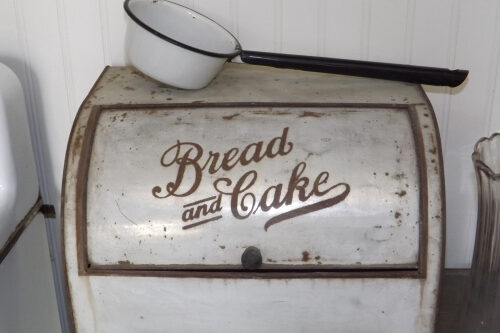
Before preservatives extended shelf life, bread boxes were essential for keeping loaves fresh. The wooden or metal boxes maintained just the right balance of air circulation and humidity. Chefs and bakers today are bringing them back to preserve artisanal breads. Plastic bags trap moisture and ruin crusts, but bread boxes keep them crisp.
In many bakeries, you’ll see vintage-style boxes behind the counter again. They’re practical, but also symbolic—a commitment to craftsmanship over convenience. Bread baked daily deserves to be stored the right way. Grandparents understood that good bread is alive, and it needs to breathe.
2. Cast Iron Skillets
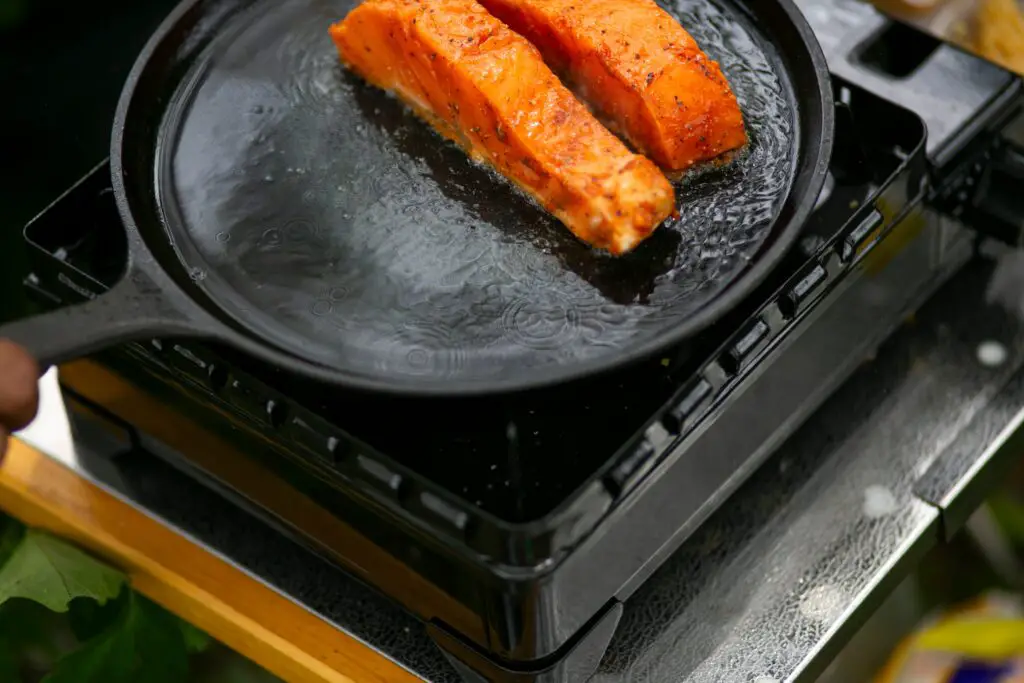
Before nonstick pans became the norm, cast iron skillets were the heart of every kitchen. These heavy, black pans could go from stovetop to oven without missing a beat, perfect for everything from cornbread to fried chicken. Today, chefs prize them for their even heat distribution and natural seasoning that builds flavor over time. The best part? A well-cared-for cast iron can last for generations, something no Teflon pan can promise.
It’s not just nostalgia driving their comeback—it’s performance. Many modern chefs are realizing that a properly seasoned cast iron can outperform expensive cookware. They develop a nonstick surface naturally, without chemicals, and can handle high heat that other pans can’t. It’s no wonder restaurants are stocking them again, both for the flavor and the old-school craftsmanship.
3. Hand-Cranked Meat Grinders
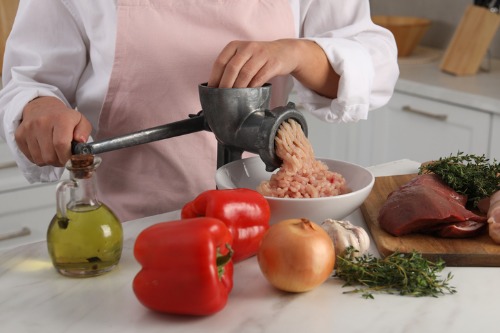
Long before pre-ground beef appeared at supermarkets, grandparents used hand-cranked meat grinders clamped to the counter. They’d feed in chunks of beef, pork, or even venison, turning the handle to control texture and freshness. Chefs today are rediscovering that hand-grinding gives better flavor and control over fat content. The result is juicier burgers and sausages that taste cleaner and richer.
Modern chefs also appreciate that these grinders waste less and encourage creativity. You can mix different cuts, spices, or even vegetables right in. Grinding meat by hand also avoids the heat buildup of electric grinders, which can affect flavor. It’s a slower process, but one that rewards patience—just like cooking from scratch.
4. Stoneware Crocks
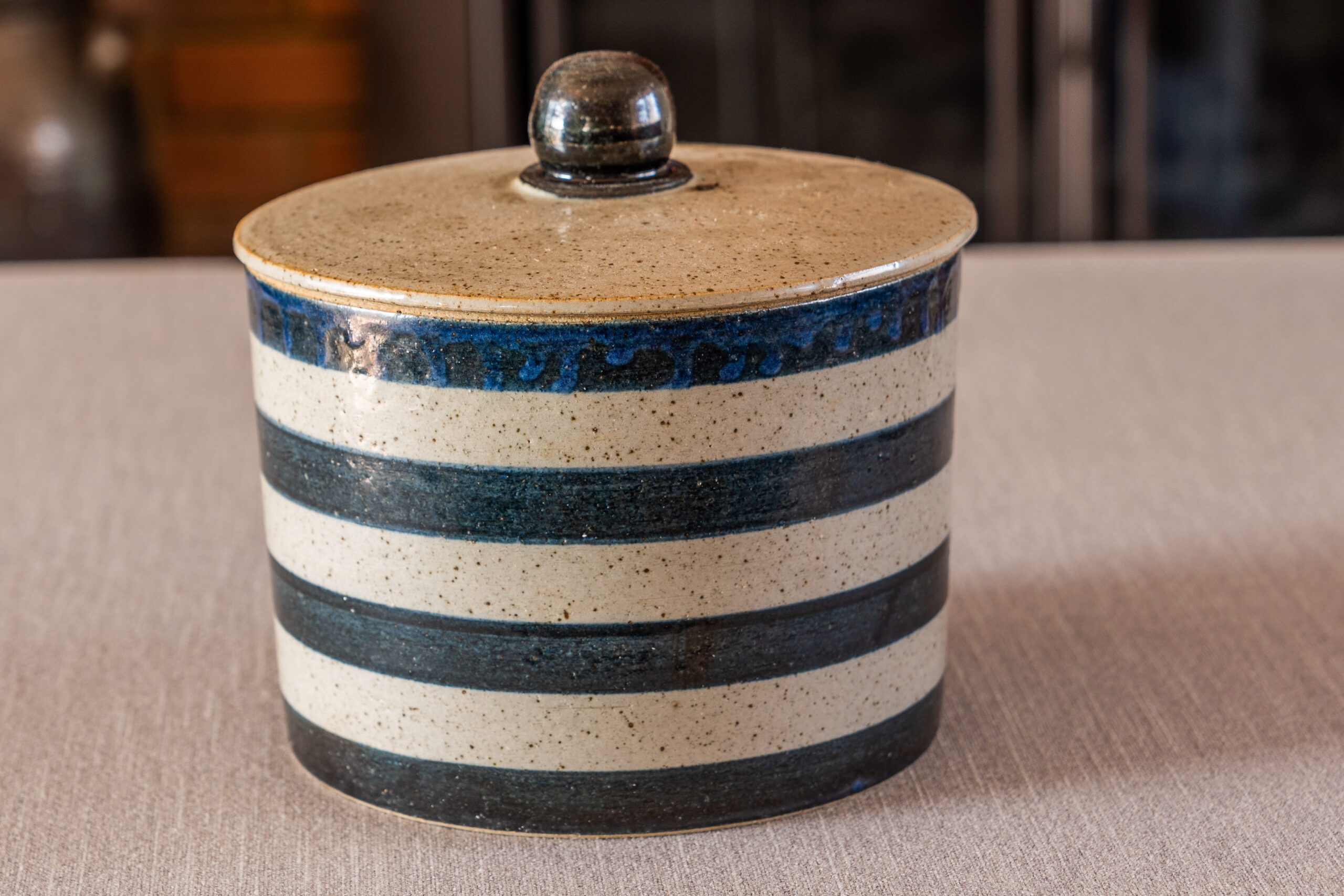
Before plastic containers and glass jars filled our cabinets, stoneware crocks were the go-to for fermenting and storing food. Grandparents used them to make sauerkraut, pickles, or even sourdough starters. The natural material kept things cool and consistent, perfect for fermentation. Today’s chefs value them for the same reason: they breathe just enough to encourage good bacteria without letting in too much air.
The resurgence of fermentation in modern cuisine has brought these crocks back into demand. Artisanal chefs now use them for kimchi, kombucha, and cultured butter. Their rustic look also fits right into farm-to-table restaurant decor. They’re not just functional—they’re beautiful reminders of slower, more mindful food traditions.
5. Butter Bells
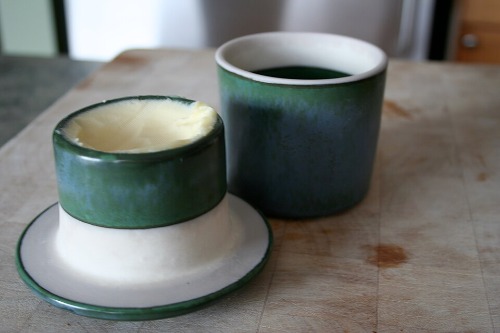
Butter bells, or butter crocks, kept butter fresh and spreadable before refrigeration took over. The design used a bit of water to create an airtight seal that kept butter soft without spoiling. Chefs today love them for exactly that reason—no waiting for cold butter to soften before cooking or spreading. They’re also an eco-friendly nod to the pre-fridge era.
Many restaurants are bringing them back for table service, pairing warm bread with perfectly spreadable butter. It adds a touch of nostalgia and craftsmanship to something as simple as butter. The design itself is timeless, combining practicality with charm. Grandparents knew how to make ordinary ingredients feel special, and butter bells capture that spirit.
6. Lard Tins
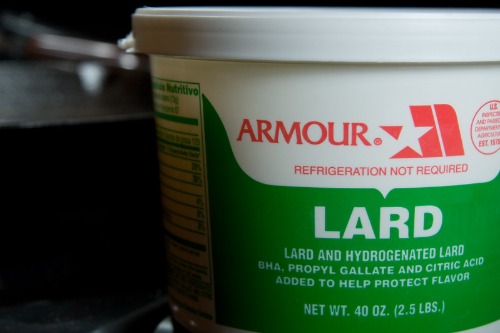
Before vegetable oils and margarine dominated shelves, lard was the kitchen staple for frying and baking. Grandparents kept it in big metal tins, often reused from one batch to the next. Chefs today are embracing lard again for its clean flavor and high smoke point. It makes the flakiest pie crusts and crispiest fried chicken you can imagine.
Rendered properly, lard is actually lower in trans fats than many processed shortenings. It also brings an old-fashioned depth of flavor that modern oils just can’t match. Farm-to-table restaurants now make their own lard from heritage pork. What was once dismissed as “unhealthy” is being reappreciated as a natural, traditional fat.
7. Mason Jars

Once a symbol of rural kitchens, mason jars held everything from preserves to leftovers. Grandparents relied on them to can fruits, jams, and vegetables that lasted all winter. Now chefs are using them again for pickling, fermenting, and even serving desserts. They’re durable, versatile, and infinitely reusable.
Beyond practicality, mason jars speak to a broader return to transparency and simplicity in cooking. You can see exactly what’s inside, which feels honest and unpretentious. Their rustic aesthetic also fits the handcrafted ethos of many modern kitchens. Sometimes, the best storage solution was invented a century ago.
8. Enamelware Pots
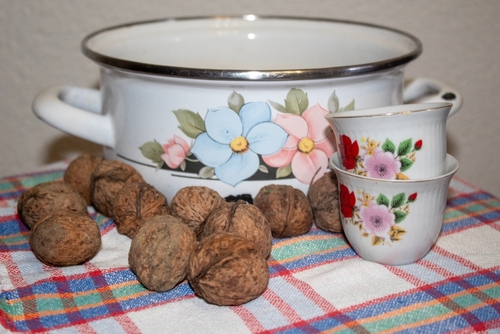
Before stainless steel took over, enamel-coated pots and pans were everywhere. Grandparents used them because they were easy to clean and didn’t react with acidic foods. Chefs today love enamelware for slow braises, soups, and stews, since it heats evenly and holds flavor beautifully. Plus, the speckled colors bring a bit of charm to any kitchen.
Brands like Le Creuset have kept the enamelware tradition alive in modern form. But even the vintage versions are prized for their durability and character. Their nostalgic look fits perfectly into open kitchens where presentation matters. Cooking in enamelware feels like reviving a piece of culinary history.
9. Rolling Pins with Handles
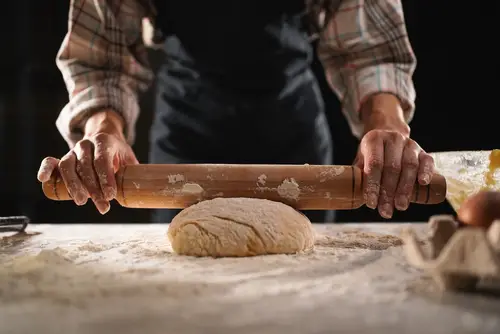
Grandparents didn’t buy pre-made pie crusts—they rolled their own, often with solid wooden rolling pins. These simple tools offered balance and control that’s hard to replicate. Today’s bakers and chefs are returning to wooden rolling pins for their tactile feedback and precision. You can literally feel the dough beneath your hands, something no machine can mimic.
Many chefs prefer older rolling pins because they were crafted from a single piece of hardwood, making them sturdier. The slight wear on vintage pins actually helps them perform better. Each one carries a story, a mark of all the pies and cookies it helped create. For chefs, that connection to generations of bakers is priceless.
10. Spice Tins
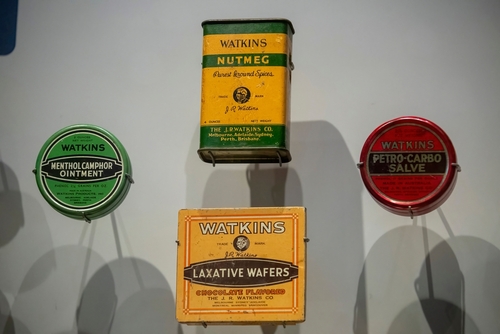
Before mass-produced spice racks, families stored spices in small metal tins, often labeled by hand. These tins kept light and air out, preserving the spices’ aroma much longer. Chefs today value the same principle: freshness and flavor come from proper storage. The look of those vintage tins has even inspired high-end restaurant spice displays.
Beyond practicality, they evoke a time when cooks knew their spices by scent and feel. There was no reaching for pre-blended mixes—you built flavor from scratch. That hands-on relationship with spices is what modern chefs aspire to reclaim. In a way, the old tins remind us to slow down and season with intention.
11. Mortar and Pestle
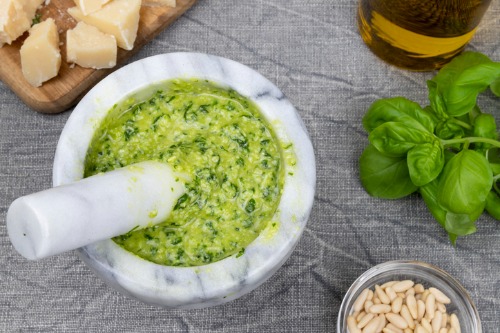
Before electric grinders, grandparents used mortars and pestles to crush herbs, garlic, and seeds. The process was slow, but it released essential oils and aromas that machines often miss. Today’s chefs swear by them for making pesto, curry pastes, and spice rubs. The texture and flavor you get from hand-grinding are unmatched.
It’s not just about authenticity—it’s about taste. A mortar and pestle give you control over coarseness, allowing layers of flavor to develop. Plus, the ritual of grinding connects chefs to ancient culinary traditions. It’s a humbling reminder that great flavor comes from effort, not shortcuts.
12. Coffee Percolators

Before drip machines and espresso makers, percolators were the sound of morning. Grandparents would brew coffee slowly on the stove, letting the aroma fill the house. Chefs today are revisiting percolators for their bold, robust flavor. The brewing method extracts a deeper roast profile that modern machines sometimes flatten.
While they require more attention, percolators reward patience with complexity. The process feels almost meditative, connecting the brewer to every step. Specialty coffee shops have even begun experimenting with updated percolator designs. Sometimes, the best innovation is rediscovering what already worked.
13. Hand Mixers
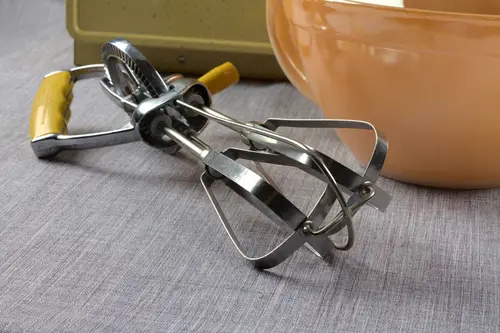
Not the electric kind—grandparents used manual egg beaters with twin whisks you’d crank by hand. They were perfect for whipping cream, beating eggs, or mixing batter without plugging anything in. Modern chefs are finding these useful again for small batches and delicate textures. Hand-cranking gives more control, preventing overwhipping.
Beyond utility, there’s something satisfying about hearing that soft whirr as you mix by hand. It brings mindfulness back into baking, replacing the noise of motors with rhythm and feel. Plus, they’re sustainable—no electricity, no waste. It’s a quiet rebellion against the kitchen’s growing dependence on gadgets.
14. Flour Sifters
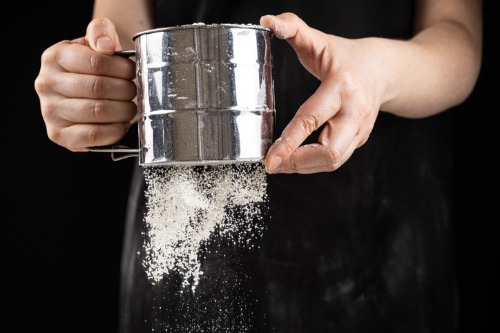
Before pre-sifted flour became common, a metal hand-cranked sifter was essential for light, airy baking. Grandparents used them to remove lumps and aerate the flour for cakes and biscuits. Chefs today are rediscovering that sifting still makes a noticeable difference in texture and rise. A simple swirl of the handle can turn dense dough into something delicate and tender.
In professional kitchens, pastry chefs swear by sifters for blending dry ingredients evenly. It’s a small extra step, but it separates good baking from great baking. The tactile ritual of sifting also connects modern cooks to the rhythm of old-fashioned baking. It’s proof that sometimes, the simplest tools never go out of style.
15. Jelly Molds
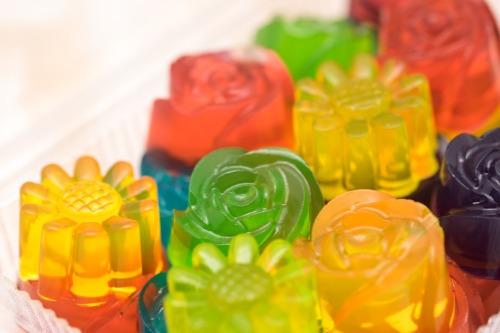
Before modern silicone bakeware, grandparents used metal or glass jelly molds to shape desserts into gleaming works of art. They turned simple fruit gelatin into centerpiece-worthy creations, often saved for special occasions. Chefs today love them for their intricate designs and nostalgic elegance. The molds give modern plating a sense of history that factory-made forms can’t replicate.
Beyond their beauty, jelly molds remind cooks that presentation used to be deeply personal. Each mold shape carried meaning—a ring for family gatherings, a dome for celebration. Reintroducing these molds revives that lost artistry in dessert-making. For chefs, they represent the sweet spot between tradition and creativity.
16. Pie Safes
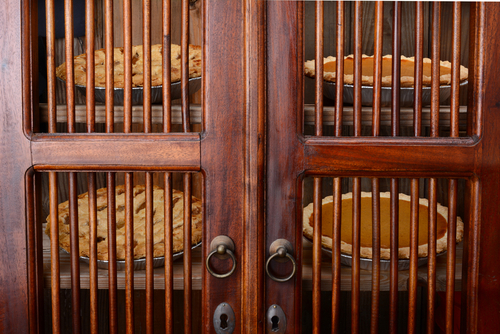
Before refrigeration, pie safes were the clever solution for keeping baked goods fresh. These ventilated wooden cabinets had perforated tin panels to let air in but keep pests out. Grandparents used them for pies, breads, and other perishables, trusting natural airflow instead of electricity. Today’s chefs are drawn to their practicality and charm.
Many modern kitchens are adapting the pie safe’s design for cheese aging or bread proofing. It’s a sustainable alternative to constant refrigeration and fits perfectly with the farm-to-table philosophy. The craftsmanship of these cabinets also adds rustic beauty to restaurant spaces. What was once everyday furniture has become a symbol of thoughtful food care.
17. Canning Funnels
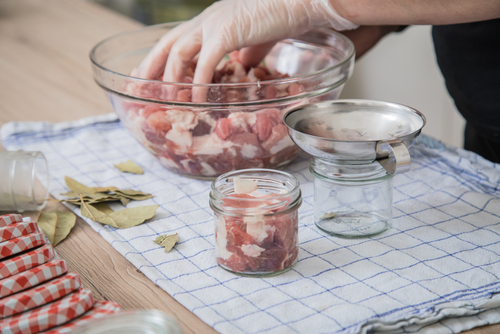
Grandparents knew that preserving food required precision, and the canning funnel was their unsung hero. The wide-mouth design prevented spills and ensured a perfect jar seal every time. Chefs today have rediscovered them as essential tools for bottling sauces, syrups, and stocks. They make the process cleaner, faster, and more reliable than free-pouring.
But beyond efficiency, the canning funnel brings back the spirit of self-sufficiency. It’s part of the ritual of putting food by for another season—a concept modern chefs are reviving. The funnel’s sturdy simplicity speaks to a slower, more intentional way of cooking. For those chasing zero-waste kitchens, it’s a small tool with a big purpose.
18. Aluminum Ice Cube Trays
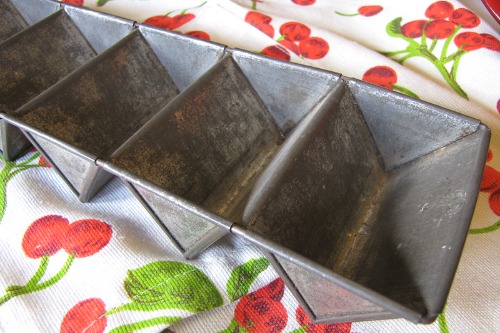
Before plastic trays and ice makers, grandparents used aluminum ice cube trays with levered dividers. These trays froze water faster and popped cubes out with a satisfying crack. Chefs now prize them for chilling cocktails and crafting crystal-clear ice. Their retro look also fits perfectly in high-end bar programs that celebrate classic craftsmanship.
The trays’ efficiency comes from their material—metal conducts cold quickly, giving bartenders better control over ice texture. Unlike modern silicone molds, they last decades and never absorb odors. Many mixologists seek out vintage versions for their durability and aesthetic appeal. It’s one of those rare tools that’s as stylish as it is functional.
19. Grease Strainers
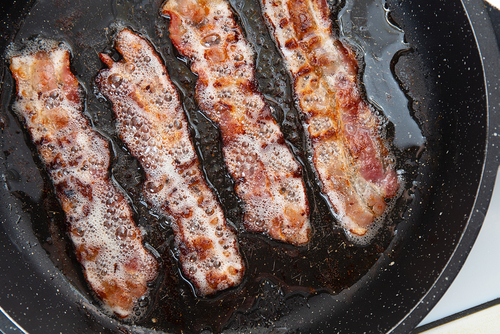
Grandparents didn’t waste a drop of flavor, and grease strainers were their secret weapon. After frying bacon or roasting meat, they’d pour the drippings through a built-in sieve to separate solids. That golden fat was liquid gold for biscuits, gravies, and sautéing vegetables. Today’s chefs are reclaiming that habit as part of a full-flavor, zero-waste philosophy.
In modern kitchens, strainers are being reintroduced for clarifying butter and saving rendered fats. It’s a nod to resourcefulness that also enhances taste. What once seemed old-fashioned now feels responsible and gourmet. The humble grease strainer proves that flavor and sustainability can share the same vessel.
20. Cooling Racks
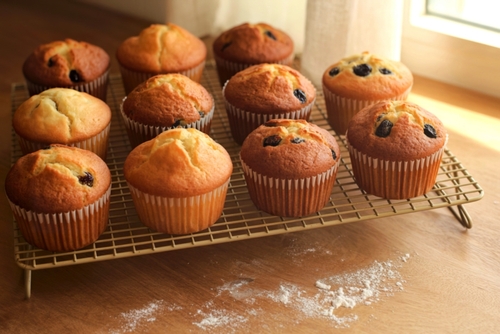
Long before wire shelving became industrial kitchen staples, grandparents used cooling racks for everything from cookies to fresh bread. The elevated grates prevented sogginess by allowing air to circulate evenly underneath. Chefs today still rely on the same principle for crisp textures and perfect finishes. The old designs, often heavier and sturdier, are making a comeback in professional bakeries.
Modern cooling racks may look sleeker, but vintage ones were built to last—and to handle weighty cast iron pans. Their enduring design speaks to a time when tools were meant to serve a lifetime. In pastry kitchens, chefs now use them for glazing, draining, and even plating desserts. Sometimes the simplest grid in the kitchen creates the best results.
21. Potato Mashers
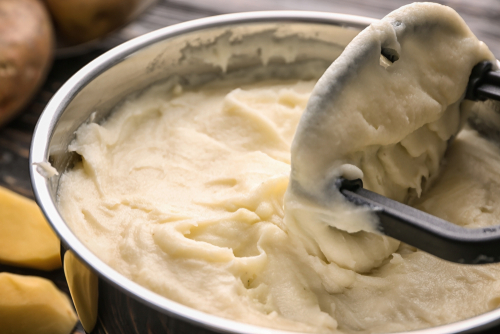
Before blenders and food processors, the hand masher ruled the kitchen. Grandparents used it to crush boiled potatoes, beans, and even fruits for jams. Chefs today prefer them for achieving the perfect rustic texture—chunky, creamy, and full of character. It’s the kind of control that machines simply can’t replicate.
Beyond nostalgia, the potato masher represents tactile cooking at its best. You feel when the texture is right, instead of relying on settings or timers. Many chefs are even redesigning mashers with ergonomic handles inspired by the originals. Bringing this tool back isn’t just about potatoes—it’s about reconnecting with the food itself.
This post 21 Things Grandparents Kept in Their Kitchens That Chefs Are Begging to Find Again was first published on Greenhouse Black.
